Many people in the United States consider Kentucky bluegrass to be the ideal grass for a beautiful lawn. This grass, when given its ideal growing conditions and the attention and care it requires, will produce a lawn that lives up to its reputation as being dense, luscious, and long-lasting. Kentucky bluegrass, however, cannot do this on its own.
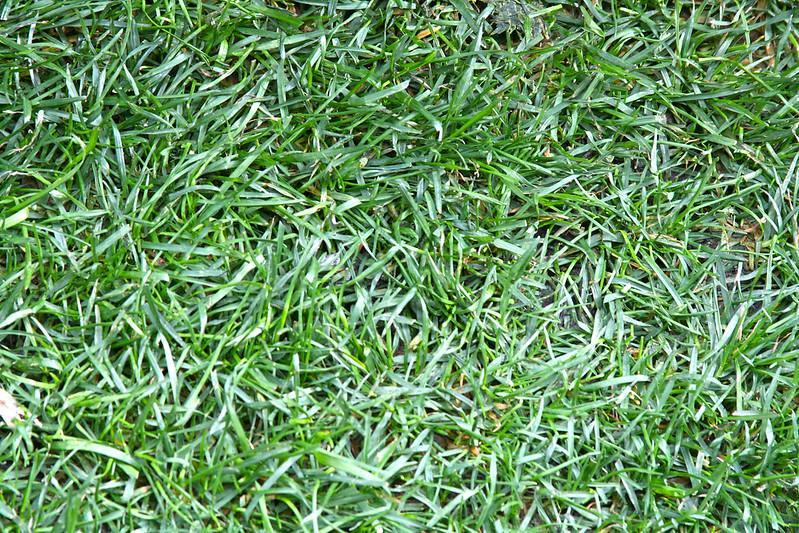
Photo Credit Kentucky bluegrass is a cool-season grass native to Europe, Asia, Algeria, and Morocco.
This grass requires a fair amount of care to keep it looking well, but the effort is worth it. All in all, Kentucky bluegrass may be an excellent choice for your lawn, depending on your climate and your desired level of maintenance.
Being a cool-season grass, Kentucky Bluegrass thrives in the cool months of spring, fall, and winter. Also, the rate at which it grows slows down in the summer. Kentucky bluegrass can survive in partial shade if taken care of properly. However, in general, it prefers the full sun. While this species sees widespread use in the United States due to its suitability, it struggles to thrive in regions with warm summers.
Read on to learn more about establishing and caring for Kentucky bluegrass!
History Of Kentucky Bluegrass
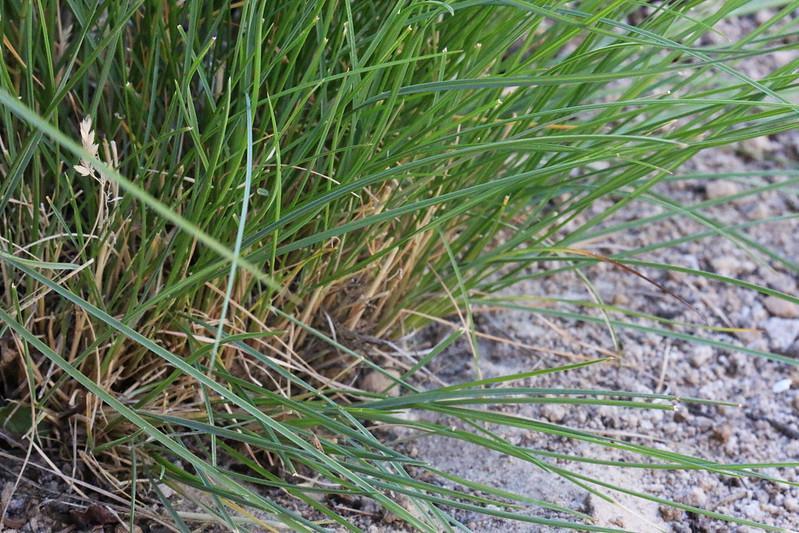
Despite its name, Kentucky Bluegrass is not indigenous to the United States.
What most people call “Kentucky bluegrass” is actually one of the most common types of grass in the world. It grows naturally in most of Asia and Europe. The grass, easily recognizable by its silvery blue hue and pointed tips resembling the bow of a boat, thrives in cooler climates with sufficient annual rainfall.
It is believed that early colonial European settlers brought Kentucky bluegrass with them when they settled in North America. Native North American Indians dubbed it “White man’s tracks” because Kentucky bluegrass could be seen almost anywhere white men walked with their herds and plows. Its quick dispersal was most likely due to the cobwebby hairs near the base of the floret, which adhere to almost everything they contact.
It Dominates Much Of The US!
For quite some time, Kentucky bluegrass has dominated all other cool-season grasses in terms of turf usage. It has been widely planted for pastures in areas where it thrives, and it has also been used for lawns and athletic fields, as well as golf course fairways, tees, and rough. In northern regions, sod production was made possible by Kentucky bluegrass. To most people, this type of grass is what they mean by turf.
You might think that Kentucky bluegrass is a native species because it can grow in so many different climates. However, like many of our other grasses, it came to North America with traders and settlers from Europe. Kentucky bluegrass is indigenous to the mountainous regions of Europe, northern Asia, Algeria, and Morocco.
Sometimes Kentucky Bluegrass Is Invasive
Though Kentucky bluegrass is currently regarded as a non-native, invasive plant, the grass has been naturalized throughout a significant portion of the United States.
Its range extends well beyond the confines of the so-called “bluegrass region” in Kentucky, which is located in the state’s north-central regions.
Some Evidence Suggests It Is Native!
This plant’s native status in Utah is a topic of significant debate. New evidence reveals that there may have been a native population in the area before it was brought over from Europe, which contradicts what was previously assumed about its origin.
Whether naturally occurring or artificially introduced, it now functions like a native plant, contributing anywhere from 5 to 10% of the overall vegetation on sites. It grows in various environments, including irrigated valleys, residential lots, golf courses, and even high mountains, where annual rainfall is between 14 and 28 inches.
Why Should You Grow Kentucky Bluegrass?
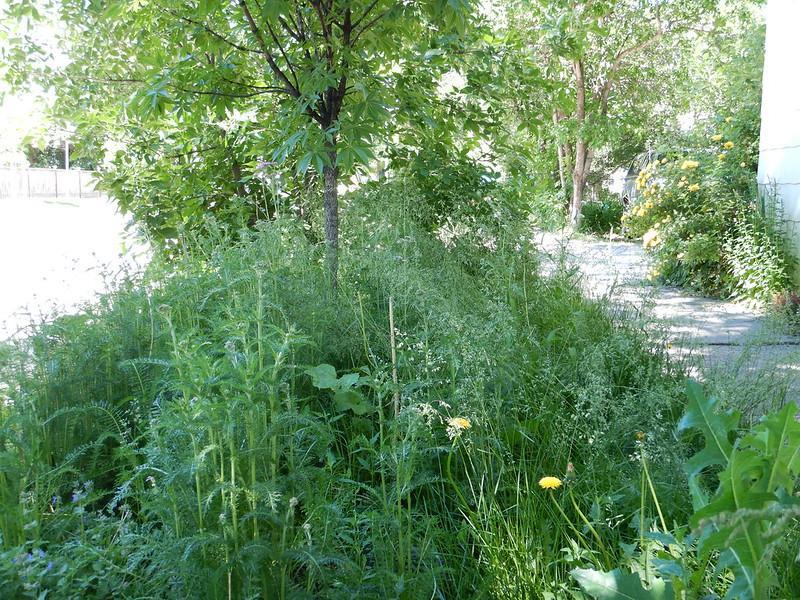
Because of its rapid growth, Kentucky Bluegrass has a significant advantage over other cool-season grasses.
Kentucky bluegrass is a staple of lawns everywhere due to its stunning look and incredible resistance to wear and tear. Because of its rapid growth rate, Kentucky Blue grass keeps a consistent texture throughout yards, which helps to enhance its overall appeal.
No more worrying about bare patches in your yard caused by the kids or the dog if you plant Kentucky Bluegrass. Here are a few advantages/benefits of growing Kentucky Bluegrass in your yard that may make it an excellent choice for your lawn.
It Has Excellent Disease Resistance!
Diseases don’t seem to bother Kentucky Bluegrass very much. You shouldn’t have any trouble with grass diseases like leaf spots and rust as long as you keep up with the lawn’s watering and maintenance as recommended. Having to deal with common lawn diseases is a rare occurrence for a well-maintained Kentucky Bluegrass lawn.
It Has High Cold Tolerance!
The Kentucky bluegrass has the highest level of tolerance to the cold when compared to other cool-season grasses. It is able to survive extended exposure to the brutally cold climate, which would usually be fatal to other cool-season grass lawns.
If properly maintained, Kentucky Bluegrass may even thrive in warm temperatures of the summers despite the fact that it is a cool-season grass.
It Has Excellent Resistance To Wear & Tear!
Kentucky Bluegrass’s rhizomes, which spread underground, allow it to self-heal and survive damage. Bluegrass can regrow from its rhizomes even if the grass blades are removed since the rhizomes will remain underground and grow again into new plants.
So, if your lawn is constantly trodden on by people, including children and animals, selecting Kentucky Bluegrass as your grass of choice is an excellent idea.
It Spreads Quickly And Easily!
The ability of Kentucky Bluegrass to propagate itself quickly gives it a significant competitive edge over other types of grass that grow during the cool season. It spreads using horizontal rhizomes. Every few centimeters along its length, each of these rhizomes creates a node, and every one of these nodes has the potential to produce a new blade of grass.
It Has A Long Life!
Bluegrass seeds take up to 21 days to germinate, but once they do, they can survive virtually indefinitely. So, try planting bluegrass with perennial ryegrass, which grows quickly and protects soil from erosion. The ryegrass on the lawn will act as a nurse crop, but it will be pushed out of existence as the bluegrass continues to spread and thicken over the following months. Eventually, the lawn will be composed entirely of bluegrass.
Why You May Not Want Kentucky Bluegrass!!!
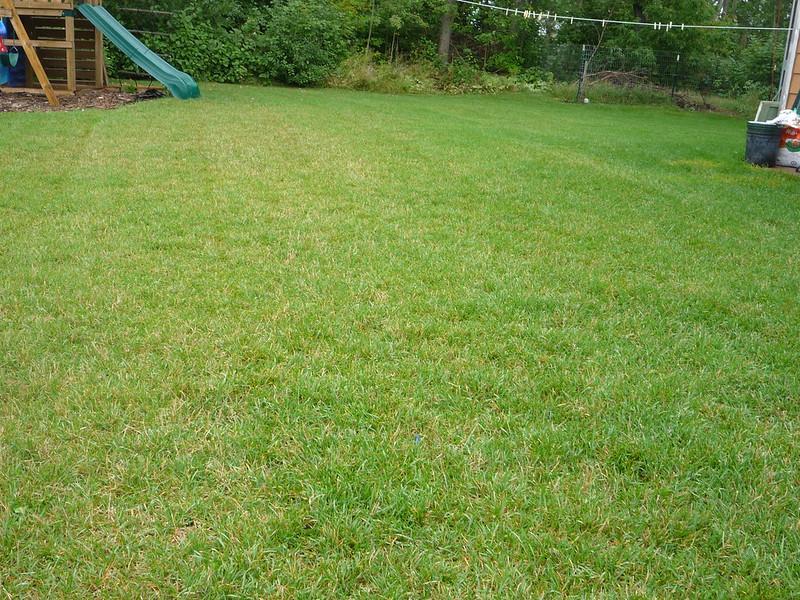
Unlike other grass species, Kentucky bluegrass develops shallow roots and needs a lot of water.
Even though Kentucky Bluegrass is quite remarkable, it is not without flaws. There are many drawbacks associated with Kentucky bluegrass that could make it unsuitable for your turf. For instance, in the south, it’s a nightmare and a fortune to keep Kentucky bluegrass alive and green. Even in favorable conditions, this turf requires a significant amount of upkeep, water, and fertilizer in order to produce the best results. Check out the following list of drawbacks to determine whether or not this type of grass is right for you.
It Has High Water Requirements!
Kentucky bluegrass goes dormant in even mild drought. The good news is that all it will take is a tiny bit of water to get the green back again. Nevertheless, this grass can significantly increase your water bill during the warmer months of the year.
If you reside in an area that experiences sufficient rainfall during the summer, you should consider yourself lucky. If not, you will need to provide at least 12″ of water to the shallow roots of Kentucky Bluegrass at all times during high temperatures.
It Needs To Be Mixed With Other Grasses!
Many other familiar turf types of grass, both warm- and cool-season varieties, should be planted or sodded as the sole grass on your lawn. However, due to its disadvantages, Kentucky blue should be mixed with another turf variety if you are to grow it in good form. Typically, a self-repairing, perennial lawn can be established by sowing Kentucky bluegrass with fescues, rye, and some warm-season grasses.
It Is Very High Maintenance!
Extremely shallow root systems render Kentucky Bluegrass vulnerable to damage from both pests and drought. To encourage longer root growth, trim the grass 1.5″ shorter in the summer. This high cut and recut cycle helps generate strong roots that are more able to withstand the effects of drought. If you are not a fan of cutting the grass short or at least once a week, then this grass could be a nuisance for you.
It Needs A Lot Of Fertilizer!
You shouldn’t get this grass if you don’t like to fertilize your lawn regularly. While Kentucky bluegrass may be started for a low cost and quickly spreads, to keep its lush appearance, you will need to fertilize it more frequently than other types of grass. Most cool-season grasses need 2lbs of nitrogen per 1,000 sq. ft., but not bluegrass.
This turf requires four to five pounds of nitrogen per one thousand square feet, which is more than double the amount required by other types of grass!
Different Cultivars Of Kentucky Bluegrass!
Kentucky bluegrass is one of the most widely sold varieties of grass in America. Its standard grass cultivar is generally available in every garden store and online gardening retailer, although better grass cultivars can be obtained from more special providers.
These are generally grown for commercial purposes. However, many wholesalers of grass will also sell to individuals; you simply have to ask. In this article, I’ll talk about some of the Kentucky Bluegrass cultivars that are available on the market.
Annual Bluegrass
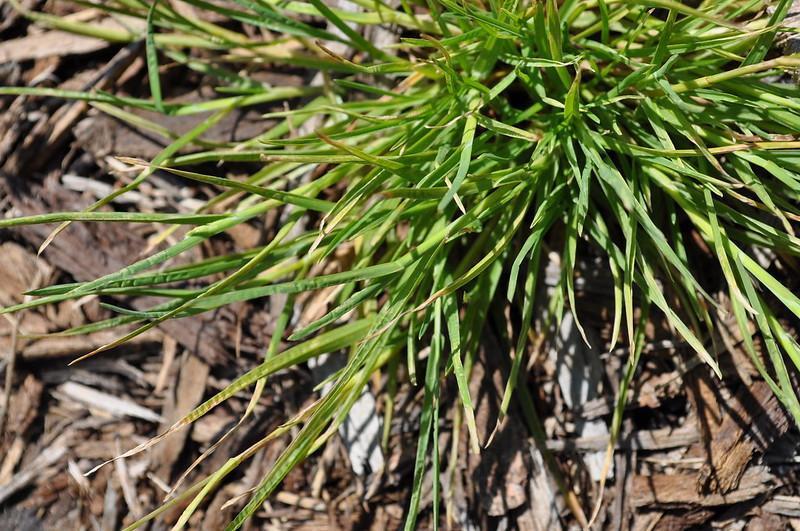
Poa Annua, often known as annual bluegrass, is a weedy, short-lived grass widespread in the US.
Poa annua, more often known as annual bluegrass, grows for only one year and spreads via seed. The leaves of annual bluegrass have a bright green color and a fine texture, while the plant itself has a tufted growth style. It is native to Europe and is found globally.
The first few weeks of spring are when you’ll notice it most. It is possible for it to be accidentally introduced into lawns by reseeding with a seed mixture that contains Poa annua seeds. This can happen when people are not paying attention.
It can blend in with the other grasses on the lawn and survive even in sporting fields that are kept short. In residential lawns, you do not need to be concerned about it. It can, however, be a symptom of compacted and frequently damp soil.
Rough Bluegrass
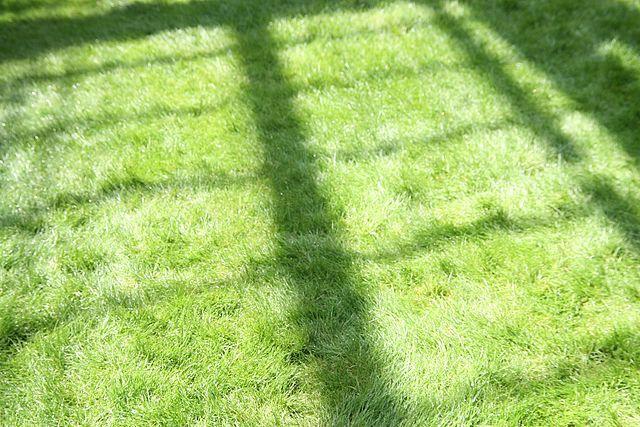
Rough bluegrass is known for its yellowish-green, soft, glossy, boat-shaped leaf blades.
Due to its susceptibility to heat, drought, and foot activity, rough bluegrass, also known as Poa trivialis, has a somewhat restricted adoption as a type of turf grass.
It also has a very patchy appearance, and as a result, it does not work well when combined with other grasses. It is sometimes, however, planted on purpose and can be tailored to suit the needs of golfers. This is the sole instance where it is employed successfully or purposely as something other than a decorative meadow grass.
Most of the time, it is a weed or unpleasant grass in the yard that people wish to get rid of. Although it comes from the same family as Kentucky bluegrass, rough bluegrass has a very different growth pattern. Kentucky bluegrass spreads by rhizomes.
Whereas stolons are what allow rough bluegrass to spread. Stoloniferous grasses also have a tendency to grow and spread more rapidly than rhizome grasses.
Other Improved Kentucky Bluegrass Cultivars
Generally speaking, the improved cultivars are only available for use in commercial settings. These are even more resistant to foot traffic than the standard Kentucky Blue, which is why they are used on athletic fields at the professional level.
Merion was the first of the modified Kentucky bluegrasses to have a low growth rate, dark green color, and resistance to disease. It was resistant to leaf spot disease, had a low compact growth habit, and could tolerate moderate levels of mowing.
These were its strengths. It swiftly established itself as the benchmark by which every other bluegrass style would be evaluated. Improved variants were introduced many years after common bluegrass varieties. These cultivars were explicitly created for athletic and sports grounds, which require more intensive upkeep than other types of grass.
The table below provides an extensive survey of improved Kentucky bluegrass strains.
| Type | Characteristics | Wear tolerance | Disease/Insect |
| Aggressive | – Extremely tolerant to wear and tear – Quickly repairing and knitting sod – High shoot density – Aggressive lateral growth | Excellent | N/A |
| Bellevue | – Stemmy (somewhat) in spring – Medium-wide leaves – Medium shoots and growth density – Phenomenal color in winter – Greens up early in the spring | N/A | – Resistant to leaf spot – Resistant to stripe smut |
| BVMG* (Baron, Victa, Merit, Gnome) | – Very stemmy in spring – Poor winter performance. – Medium-good turf – Medium-wide leaves – Low to medium growth – High seed yields | Good | – Susceptible to smut stripe and billbug – Resistant to necrotic ring spot |
| CELA | – Variable winter performance. – Not as stemmy as Bellevue – Superb turf quality – Better spring green-up | Good | – Resistant to smut stripe and leaf spot |
| Cheri | – Moderate winter dormancy. – Low to medium growth & leaf width, – Less stemmy than BVMG – High seed yields – Good turf quality – Good sod strength | Fair | – Moderately immune to leaf spot – Resistant to stripe smut |
| Common (Midwest ecotypes) | – Poor winter color and performance – Good summer stress tolerance – Good for soil stabilization/conservation. – Erect growth and narrow leaf blades – Early seed production | Poor | – Resistant to gray snow mold – Susceptible to leaf spot, necrotic ring spot, and pink snow mold |
| Compact-America* | – Low compact growth – Higher density. – Good in shade – Finer leaf – Bright dark green color – ½ inch cutting height | Fair | – Resistant to summer patch, leaf spot, and powdery mildew |
| Compact-Midnight* | – Very dark green color – Greens up a bit late in spring – Excellent heat tolerance | Fair | – Resistant to necrotic ring spot – Variable resistance to summer patch – Very susceptible to powdery mildew |
| Julia | – Moderate winter performance. – Excellent turf quality – Thick and dense – Superb performance in summer | Good | – Susceptible to brown patch and dollar spot – Resistant to stripe smut and leaf spot |
| Mid-Atlantic | – Vigorous turf & medium-high density – Highly immune to summer stress – Good winter performance. – Early spring green-up – Deep, extensive roots and rhizomes | Fair to Good | – Susceptible to the leaf spot except for Preakness |
| Shamrock | – Variable summer performance. – Moderate winter color – Not as stemmy as BVMG type – High seed yields – Amazing turf quality & sod strength | Good | – Susceptible to billbug – Resistant to leaf spot |
Related: Tall Fescue Vs. Kentucky Bluegrass | Which Is Better & Which Should You Choose?
The Best Time To Plant Kentucky Bluegrass
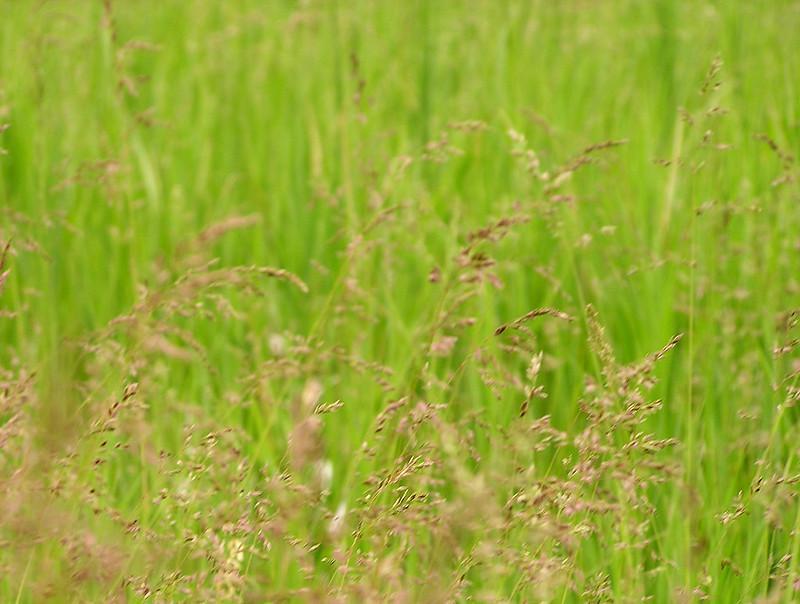
The optimal time to plant and maintain Kentucky bluegrass is early fall.
The quality of Kentucky bluegrass lawns is unquestionable. It is not only a gorgeous shade of green, but it also has a wide range of applications, from home lawns to professional golf courses. That is why if you’re considering planting Kentucky bluegrass seed, you should know when to plant it and how to do so for the best results!
Organizing your maintenance routine around the seasonal cycles of your Kentucky bluegrass is the most effective approach to caring for it. And the optimal time to sow Kentucky Bluegrass is in the early fall or early spring. This is the ideal time of year for Kentucky bluegrass to sprout, establish, and restore itself.
This is because this grass is categorized as cool-season grass, which means that it thrives and grows best when planted in cool temperatures. The optimal conditions for its growth occur when the temperature is between 50 and 60 degrees Fahrenheit.
During the warmer months, Kentucky Blue has a slow growth rate and probably needs a significant amount of additional water to maintain its growth.
Planting Kentucky Bluegrass In Spring
Although planting Kentucky Bluegrass seed in the fall is recommended for optimal results, you can still do so in the spring if you so choose. When planting grass in spring, it is best to do so in the early spring while the soil is still cool and there is plenty of time for the grass to become established before the temperature becomes too hot.
In addition to this, you will need to make sure that there is enough supply of water so that your grass can get off to a healthy start. However, take into consideration that planting in the spring comes with its own unique set of difficulties.
To start, the amount of weed pressure that exists in the spring tends to be higher. In addition, because the temperature is low, the grass might not develop as rapidly. So, ensure to give the grass a head start by taking care of it better!
Planting Kentucky Bluegrass In Fall
It’s possible that when you think of spring, you think of the planting season. However, Kentucky bluegrass seed should ideally be planted in the fall, especially if you want a gorgeous lawn full of lush vegetation ready to be enjoyed in the summer.
This is because if you sow your grass seeds in the fall, they will have enough time to mature before the onset of winter. Most cultivars belonging to Kentucky Bluegrass enter a dormant state whenever the temperature drops below 50 degrees Fahrenheit.
This is not to argue that you can’t plant in the spring — you most certainly can! – but it is to imply that you shouldn’t. However, you should know that the grass may not look its best until the following year. It will take time for the Kentucky bluegrass to become established in the spring, despite its resilient grass that can survive colder temperatures.
How To Grow Kentucky Bluegrass?
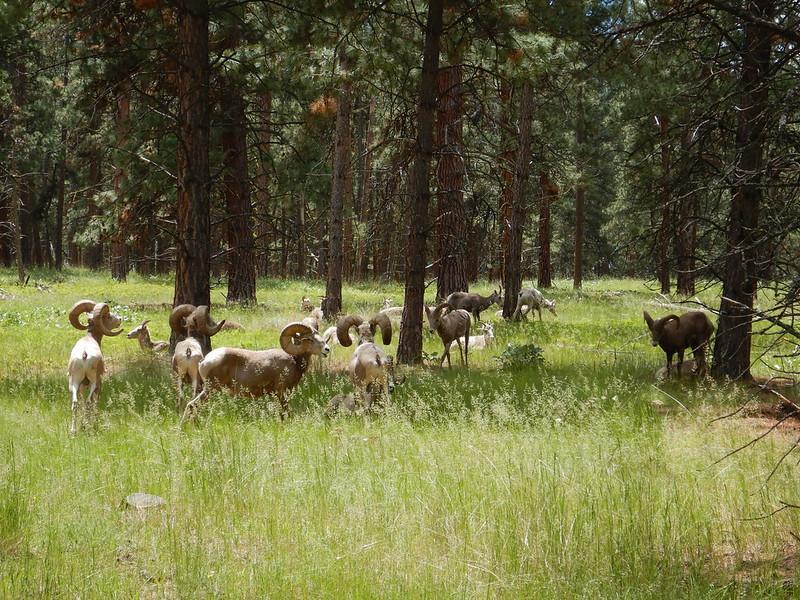
To plant Kentucky bluegrass, prepare a firm, smooth seedbed and buy good seed.
Establishing a brand new bluegrass lawn from the ground up is not an overly complicated task. However, it’s not something you can finish in a weekend, either. Make an effort to space the various phases throughout the upcoming two or three weekends.
For example, I would strongly urge that you prepare the soil one weekend and then plant the seed the following weekend. This is particularly applicable if you are gardening in an area that is shaded by trees. Here is how to do it correctly!
Before You Plant Kentucky Bluegrass!
Kentucky bluegrass prefers the sun. However, its lack of shade tolerance can be compensated for by planting it in a yard with other grasses. Moreover, Kentucky bluegrass is very drought-prone due to its shallow roots. It can also not tolerate the high summer temperatures since it does not develop deep roots like fescues and some other grasses.
Planting Kentucky Bluegrass
Preparing The Soil
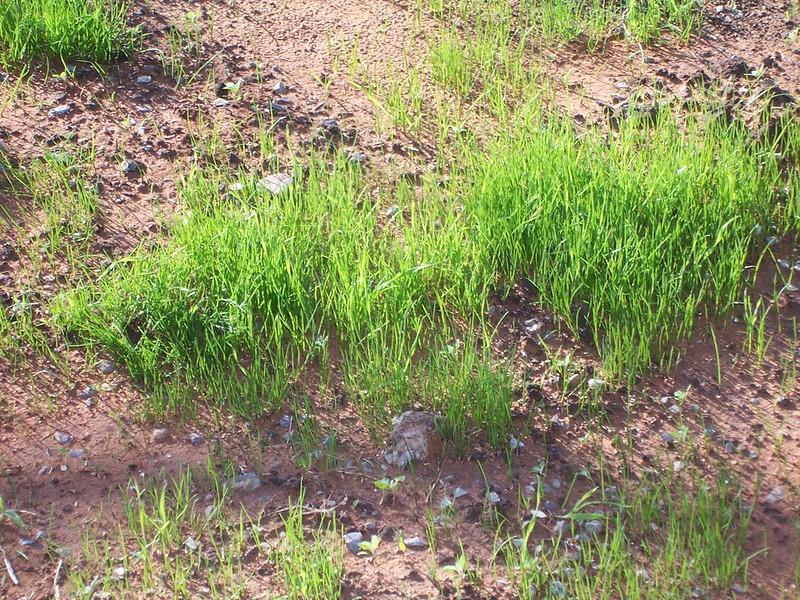
Ensure the soil has a proper pH before planting Kentucky Bluegrass seed in your yard.
Check & Test The Soil
The soil must be in place before any grass seed can be planted. It’s how grass seeds get their nourishment. Finding out the pH of your soil will help you figure out how to make it more suitable for planting grass seeds on your lawn. If your soil is in poor condition, you may require amendments to improve the overall health of your grass and soil. The ideal pH range for Kentucky Bluegrass varieties is slightly acidic soil, ranging from 6.0 to 7.0.
Adjust Soil pH
There are several methods available to bring the pH of the soil down if it is too high. Adding organic matter, aluminum sulfate, and sulfur are the three common ones. However, if you need to raise the pH of the soil, the most popular and effective additive is lime.
Rake & Level The Soil
After that, rake the area, and after that, level the ground. This can be accomplished by dragging a straight edge (such as a length of heavy timber) across the surface in various directions. The soil should next be compacted using a lawn roller to the point where it is possible to stand on the surface without leaving any imprints.
Don’t Use Weed Killers & Apply A Starter Food
Prior to sowing grass seed, make careful to avoid using herbicide or lawn weed killer. Herbicides can either stop grass seed from developing or kill it when it takes root after it has already sprouted. When I’m growing grass from seed, I also make sure to give it a boost with some starter fertilizer so that it may get a head start.
The soil is now ready to plant grass seeds, and you can move on to the next step!
Planting Kentucky Bluegrass Sod
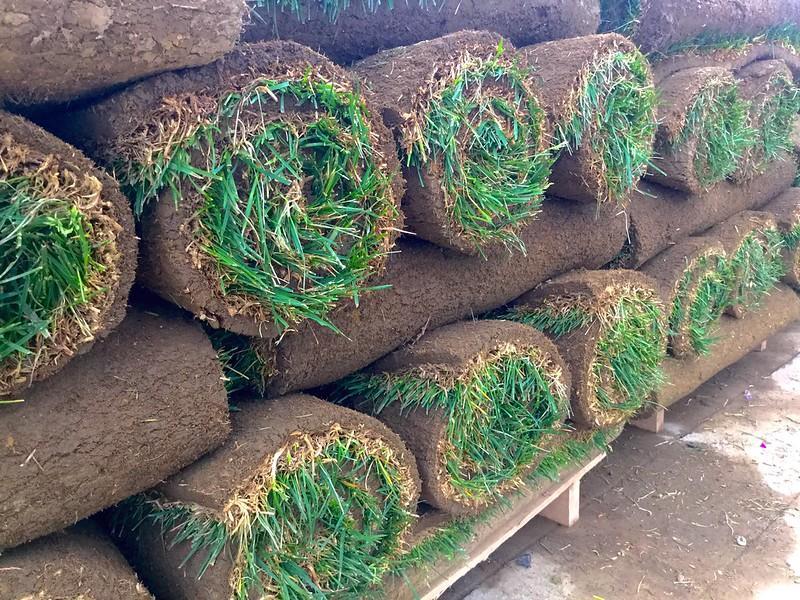
Ordering sod is one of the quickest and easiest ways to establish a lawn.
If you are not putting in a tiny lawn, it is nearly always more affordable and practical to buy pallets of sod at your local nursery and have it brought to your house.
As soon as the sod is delivered, you should start by raking the entire cultivated area so that the surface is as smooth as it can be. When laying sod, it is ideal for the soil to be moist but not soaked in preparation for the new grass.
When you plant each piece of sod, press it down firmly against the pieces already there to prevent the margins from turning brown and ruts from developing.
If you are laying sod along slopes that are particularly steep, you should secure it in place with stakes or metal pins. To eliminate any air pockets, give each block of sod a light pounding with your palm to help it settle into the soil below.
The end result should have the appearance of a brick wall rather than a checkerboard. After the sod has been laid down entirely, perform thorough irrigation.
Planting Kentucky Bluegrass Seeds
You’ll need about four to five pounds of bluegrass seed for every one thousand square feet. You can sow seed by hand or with a broadcast spreader. When using a spreader, you should plant one half of the seed lengthwise and the other half crosswise to prevent any gaps.
Be patient, as it may take 2 to 4 weeks for the seed to germinate. It is essential to avoid using more seeds than the rate that is suggested.
Overcrowding grass seedlings weakens individual plants, causes unusual growth issues, and makes your lawn more vulnerable to insects and illnesses. Once the seed has been sown, lightly rake the entire yard and cover it with less than 0.25 inches of soil.
When seeding a lawn, it’s a good idea to cover the area with a layer of wheat straw to keep the soil moist and the seed from being washed away. If you choose to proceed in this manner, you will require approximately one bale of wheat straw every 1000 square feet. However, hay should not be used for this purpose since it contains weed seeds.
Overseeding Kentucky Bluegrass Lawns
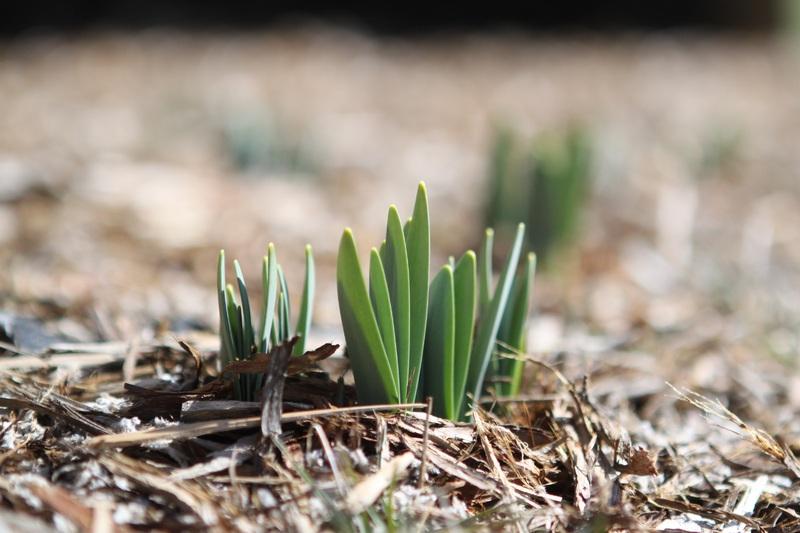
You can try overseeding your turf if your Kentucky bluegrass lawn is patchy or not growing well.
When overseeding Kentucky Bluegrass, the best month to do so is September. Overseeding is very common among homeowners who want to keep their lawns looking good, and it is necessary as most lawns acquire thin or bare places over time.
Overseeding is the process of sprinkling additional seeds into an established grass in order to cover any bald spots and make the lawn uniformly lush.
In order to overseed, first, mow your existing lawn to a very short height, and then spread grass seed and starter fertilizer across the area. When you spread new seed on your lawn, it is essential to dethatch it first and then use an aerator to ensure that the seed has ample space to take root and that it makes good contact with the soil.
Apply fertilizer and compost, then gently spread the compost and seed with the back of a leaf rake. It goes without saying that you will need to provide sufficient water to your seedlings in order to promote healthy germination and growth. Mow the grass at least four inches tall and collect the clippings for the first few cuts.
Caring For Kentucky Bluegrass
Do you find it challenging to maintain the green color of the Kentucky bluegrass on your lawn during the warm summer months? Are you noticing the growth of what appear to be lighter-colored, more delicate weeds on your lawn?
If you responded yes to either of these questions, this piece will teach you everything you need to know about your lawn and how to care for it.
How To Properly Water Your Kentucky Bluegrass Lawn?

Kentucky bluegrass needs 1 inch of water every week.
Deeply and infrequently water your Kentucky Bluegrass. Deep but occasional watering is beneficial to the health of the grass and stimulates shallow-rooted Kentucky Bluegrass to establish deeper roots that are more resistant to drought. Watering should be done at least once a week. If you want to give your lawn more water, you should extend the length of each watering session, but you shouldn’t provide it with water more than twice a week.
During the growing season, Kentucky bluegrass needs a minimum of 1 inch of water to be applied to the soil each week. When the temperature is above 75 degrees Fahrenheit (24 degrees Celsius), you should provide 2 to 2.5 inches (5 to 6.5 cm) of water.
Congratulations if you have an automatic sprinkler system. Sprinkler systems can reduce the water wasted in your yard while saving you time and money. However, in order to accomplish that, they cannot be put on an automatic schedule.
Instead, the sprinkler system needs to be manually activated to water the lawn and then turned off once the desired amount of water has been sprayed.
How To Properly Mow Your Kentucky Bluegrass Lawn?
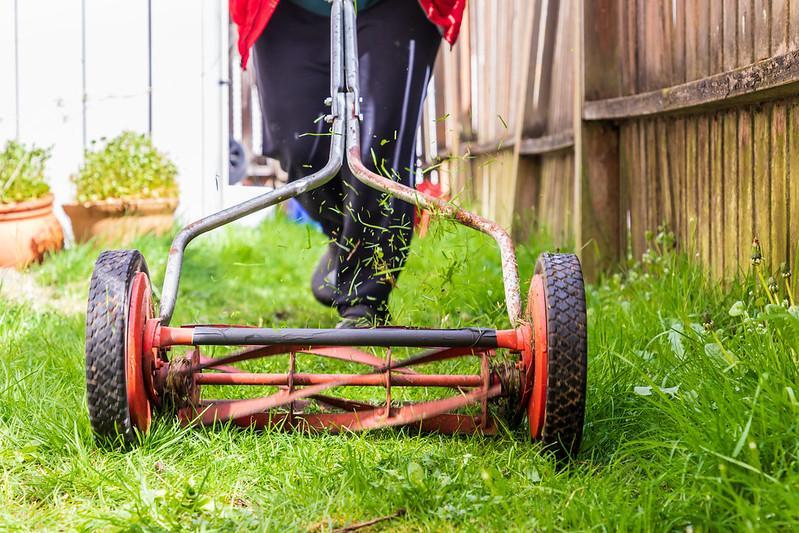
Do not mow more than one-third of the total leaf blade length in any single mowing session.
It is recommended that you adjust the cutting height of your Kentucky bluegrass lawn mower to between 2.5 and 3 inches for the spring and fall mowing seasons. In comparison, adjust the height of the mower blade between 3 and 3.5 inches during the summer.
Never take off more than a third of the leaf surface at a time when mowing. Also, keeping your lawn longer in the summer allows the lower half of the grass to stay cooler, postponing the impacts of drought stress. Longer grass is less likely to have grubs, which deposit their eggs near the soil and eat the grass’s crowns and roots.
How To Properly Fertilize Your Kentucky Bluegrass Lawn?
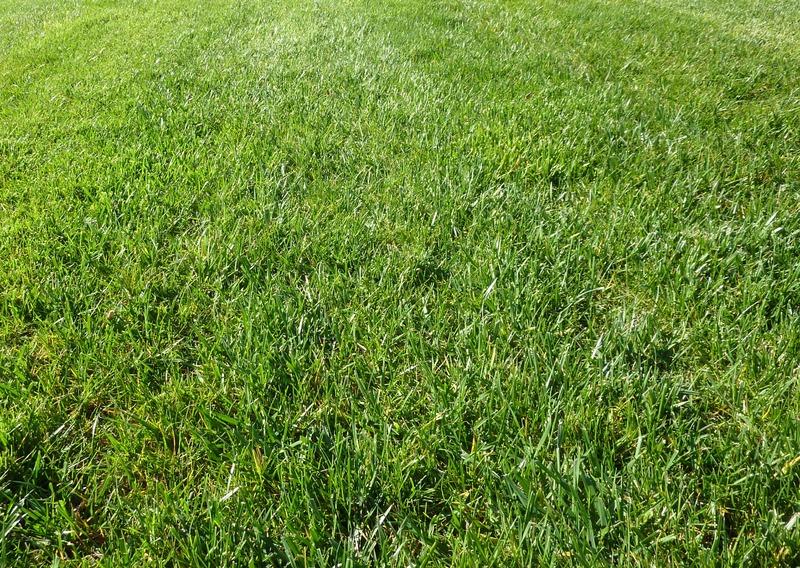
Kentucky Bluegrass should be fertilized in three to four phases from spring through fall.
The color of Kentucky bluegrass instantly deepens and becomes much more vibrant when it is fertilized, and the grass itself appears to be in much better health. If you don’t fertilize your lawn, it will turn a pale green color, become thin, and weeds will have an easier time growing in it. However, take care not to go overboard and use excessive fertilizer.
Adding too much fertilizer won’t make your lawn look more lush and dark green; it will just make it grow faster and require more frequent mowing.
Here is how to correctly fertilize your Kentucky Bluegrass yard:
Fertilization 1 – Early Spring
Utilize a fertilizer with a slow release rate beginning in the spring (March–April). When it comes to early spring fertilizer, we prefer to use Milorganite. It includes iron and slow-release nitrogen, both of which enhance the growth and coloration of the blades. It should be dispersed at a nitrogen density of 0.75 pounds per 1,000 square feet.
Fertilization 2 – Late Spring
To further give your Kentucky Bluegrass a boost, apply a fertilizer that is high in nitrogen and contains potassium in the month of May. The potassium in the fertilizer is crucial for the grass’s health because it strengthens its immune system, allowing it to withstand the stresses of summer’s extreme heat and dryness.
Fertilization 3 – Late Summer
Fertilize between September 1st and September 15th once the summer rush has faded. Kentucky Bluegrass grows the most in late summer and fall, requiring fuel during this period. Keep in mind that the latter part of the summer is also the ideal time to overseed a Kentucky Bluegrass lawn. So, if you want to save time and get two things done simultaneously, overseeding and fertilizing at the same time is the way to go.
Fertilization 4 – Fall
It is critical to apply additional fertilizer to Kentucky Bluegrass in the fall. This will be used for the grass’s final growth spurt and winter energy storage. It stimulates the process of greening the following spring in a more rapid and robust manner.
This application should not be ignored. By fertilizing now, you’re fuelling your Kentucky Bluegrass through winter dormancy so that it will flourish in April.
Kentucky Bluegrass: Final Thoughts
When it comes to grasses, Kentucky bluegrass is a top contender for lawns. Those who plant it in their yards will enjoy its uniform height, color, and vigorous growth pattern. Kentucky bluegrass is widely regarded as the purist’s option for lawns.
However, if you want to cultivate Kentucky bluegrass in your yard, you need to be sure that your yard can support the growth of the grass. It is sensitive to heat and will require more water in those situations. Even in the best of circumstances, Kentucky bluegrass could need additional upkeep to attain its full potential in terms of aesthetics.
Regardless, Kentucky Bluegrass may transform your yard into an oasis if you take the leap.
Frequently Asked Questions (FAQs)
Where does Kentucky bluegrass grow best?
Kentucky bluegrass can be found all over the United States; however, it is most important for farming purposes in the north-central and northeastern regions of the US. It grows best in regions where the average daily temperature in July does not exceed 75 degrees Fahrenheit, and its growth slows down or stops in hot weather.
Does Kentucky bluegrass spread quickly?
Kentucky bluegrass is a cool-weather perennial grass that spreads quickly. Its germination takes between two and five weeks, but once it is established, it grows very quickly. It creates a dense sod by spreading through tillers and rhizomes. New shoots (rhizomes and tillers) appear primarily in the spring and late summer.
Is Kentucky bluegrass actually blue?
It turns out that Kentucky Bluegrass is not native to Kentucky, and the lawns that are made of Kentucky Bluegrass are not blue but rather green in color.
Therefore, the moniker “Kentucky Bluegrass” is a bit of a misnomer.
Will Kentucky bluegrass choke out weeds?
Kentucky bluegrass can choke out most weeds if the lawn is carefully managed. However, this is not the case with a freshly seeded Kentucky bluegrass lawn.
In new lawns, you will have to resort to other options. Also, do not spray chemical herbicides on new lawns as they can kill the young grass.
Will Kentucky bluegrass fill in bare spots?
The growth rate of Kentucky bluegrass is moderate, and it has the ability to both spread and fill in bare spots. This is because, unlike grasses that form clumps, such as tall fescue and ryegrass, Kentucky bluegrass spreads by itself and creates sod.
Sources for Further Reading
The Grass Guide: Kentucky Bluegrass | Equine Programs. (2022). Retrieved September 4th, 2022, from https://equine.ca.uky.edu/news-story/grass-guide-kentucky-bluegrass
Kentucky Bluegrass. (2014). The University of Massachusetts Amherst. Retrieved September 4th, 2022, from https://ag.umass.edu/crops-dairy-livestock-equine/fact-sheets/kentucky-bluegrass
Healthy Lawns – Kentucky bluegrass. (2022). The University of California. Retrieved September 4th, 2022, from http://ipm.ucanr.edu/TOOLS/TURF/TURFSPECIES/kenblue.html
Taking Care of Grass in the Summertime. (2022). Retrieved September 4th, 2022, from https://www.extension.iastate.edu/news/2007/jul/070201.htm
Editor’s Recommendations
The Correct Way To Cut Lawn Edges | A Comprehensive Guide
Lawn Tractor Vs. Zero-Turn | Which Is Best & Which Should You Choose?
Solved! How Long Do Fertilizers Take To Work? | Liquid Vs. Granular Fertilizer







